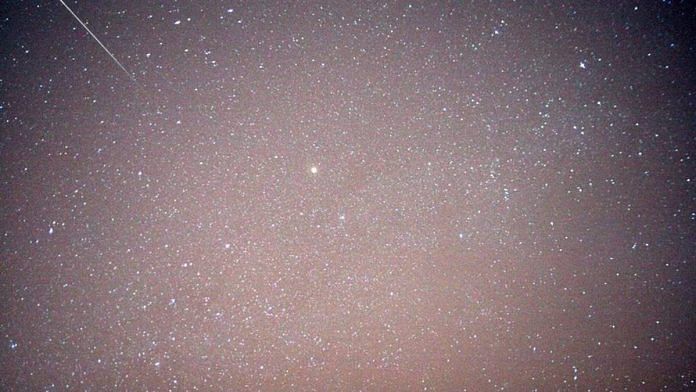Bengaluru: One of the most annually consistent cosmic fireworks, the Geminids meteor shower, is expected to peak or achieve its maximum strength on the night of 15 December.
The meteor shower, which has been visible around the world the last few nights, is best observed between 2 am and 3 am, and can be seen as streaks of light (meteors) all over the sky in all directions and locations. The lights can appear to be yellow at times.
The shower is thought to be intensifying with each passing year, and can yield up to 150 meteors per hour in extremely clear skies.
Regular meteor showers are generally caused when the Earth travels through the dust left behind by a comet. These centimetres-thick pieces of ice and rock interact and burn up in the earth’s atmosphere, causing streaks of light.
The Geminids are one of the very few exceptions where the source of dust is an asteroid and not a comet. The Geminids meteor shower rains down from the direction of the Gemini constellation, and originates from the asteroid 3200 Phaethon.
A kind of asteroid known as Apollo asteroid, the 3200 Phaethon approaches the sun closer than any other identified asteroid.
Just like a comet, when the asteroid approaches the Sun, the heat melts ices and sublimates or vaporises gases present in the rock, leaving behind a trail of debris. These grainy particles are suspended in the rock’s orbit when it crosses the Earth’s orbit.
The Geminids typically peak on the night of 14 or 15 December every year, and are visible for about a week after that.
Immediately following the Geminids — which Nasa refers to as one of the year’s “best and most reliable annual meteor showers” — are the Ursids, originating from the comet 8P/Tuttle, which are less flashy and bright, and will peak on 22-23 December.
Meteor showers like these do not require any equipment to watch. They are visible under clear skies to the naked eye all over the world, even in cities, except in Antarctica for the Geminids.
However, the intensity of the shower and its full glory is better seen in completely clear night skies, away from light pollution.
(Edited by Nida Fatima Siddiqui)
Also Read: This is how you can see Leonids, annual November meteor showers that peak on 17th of the month



